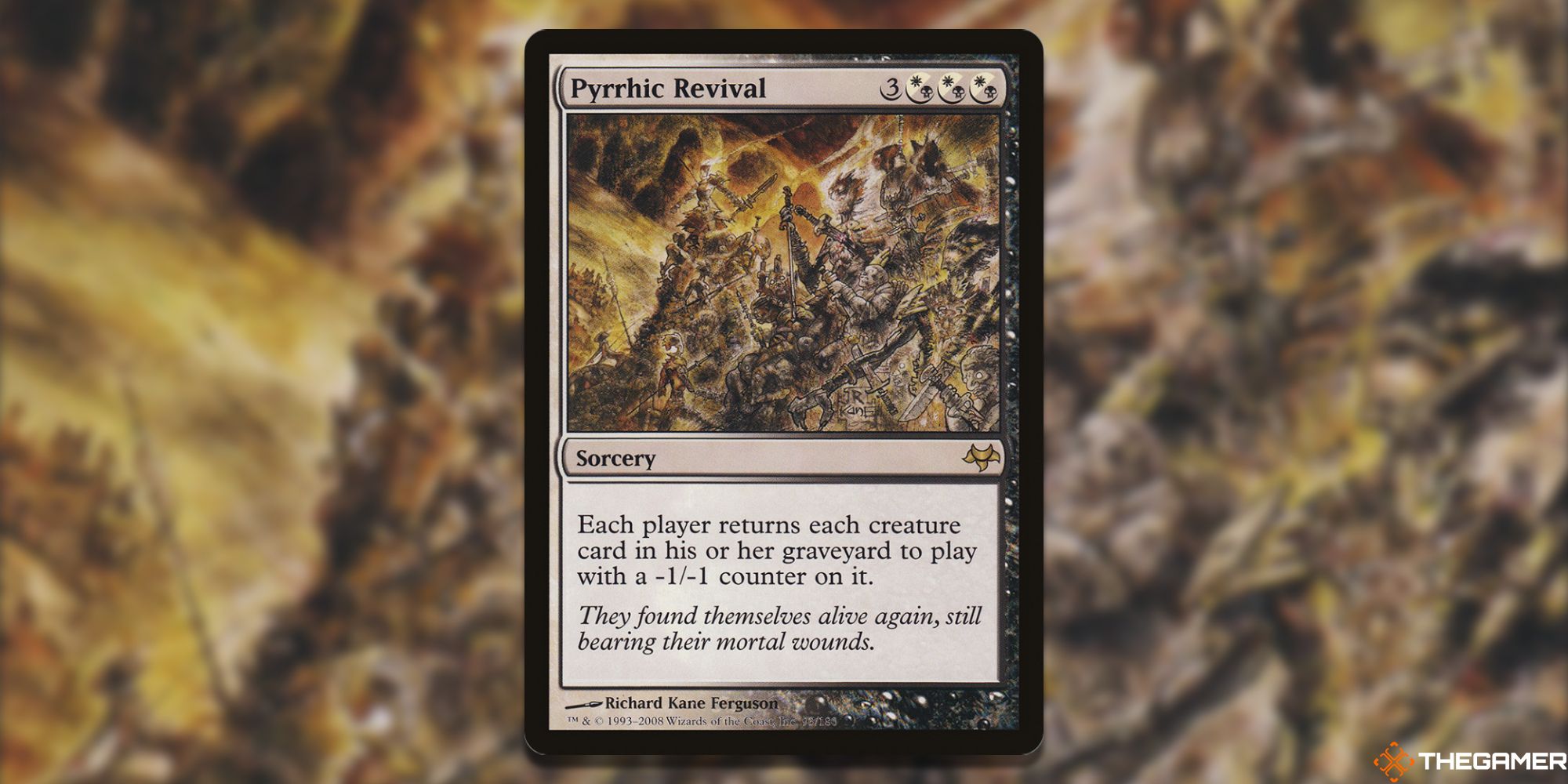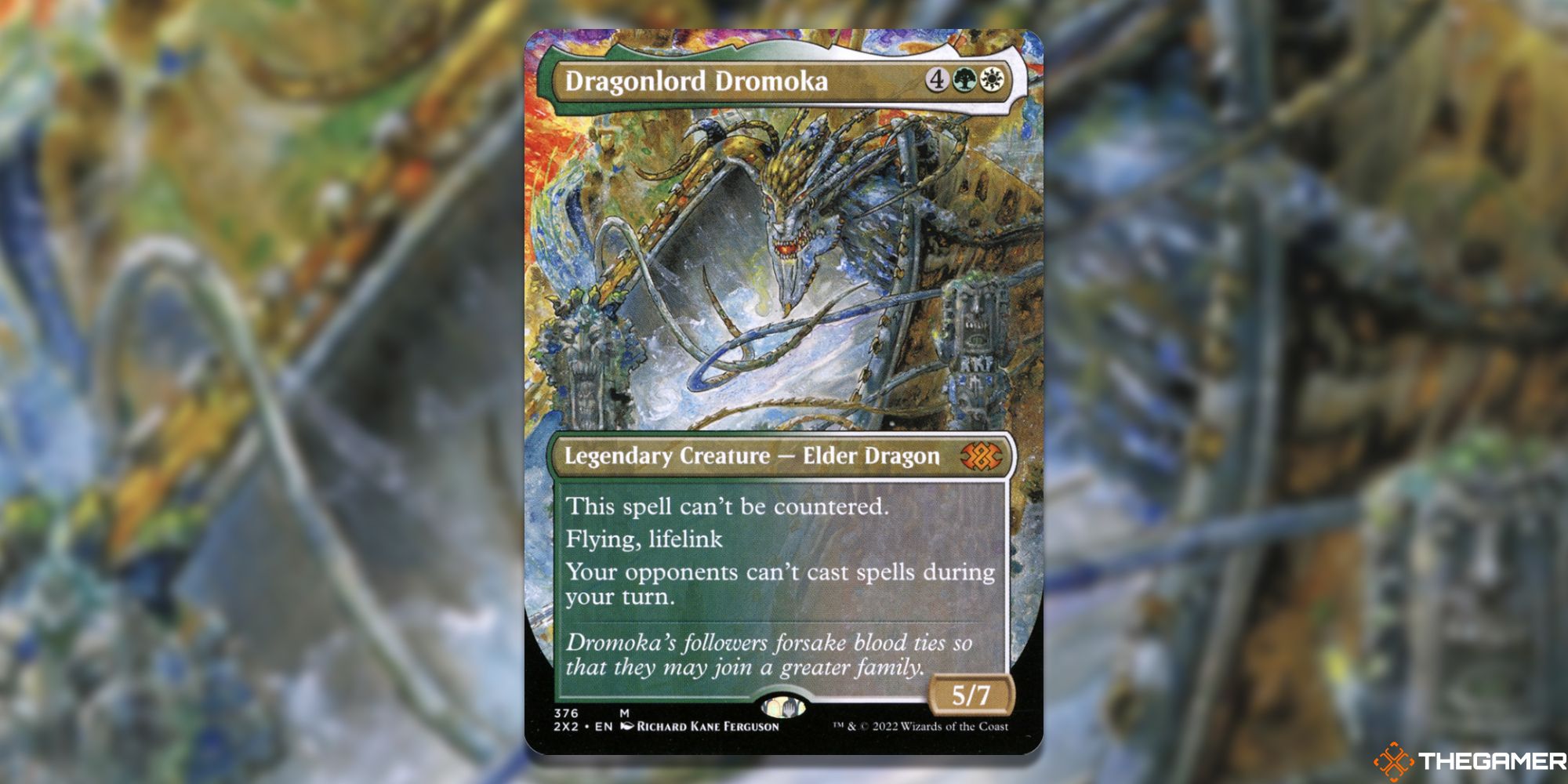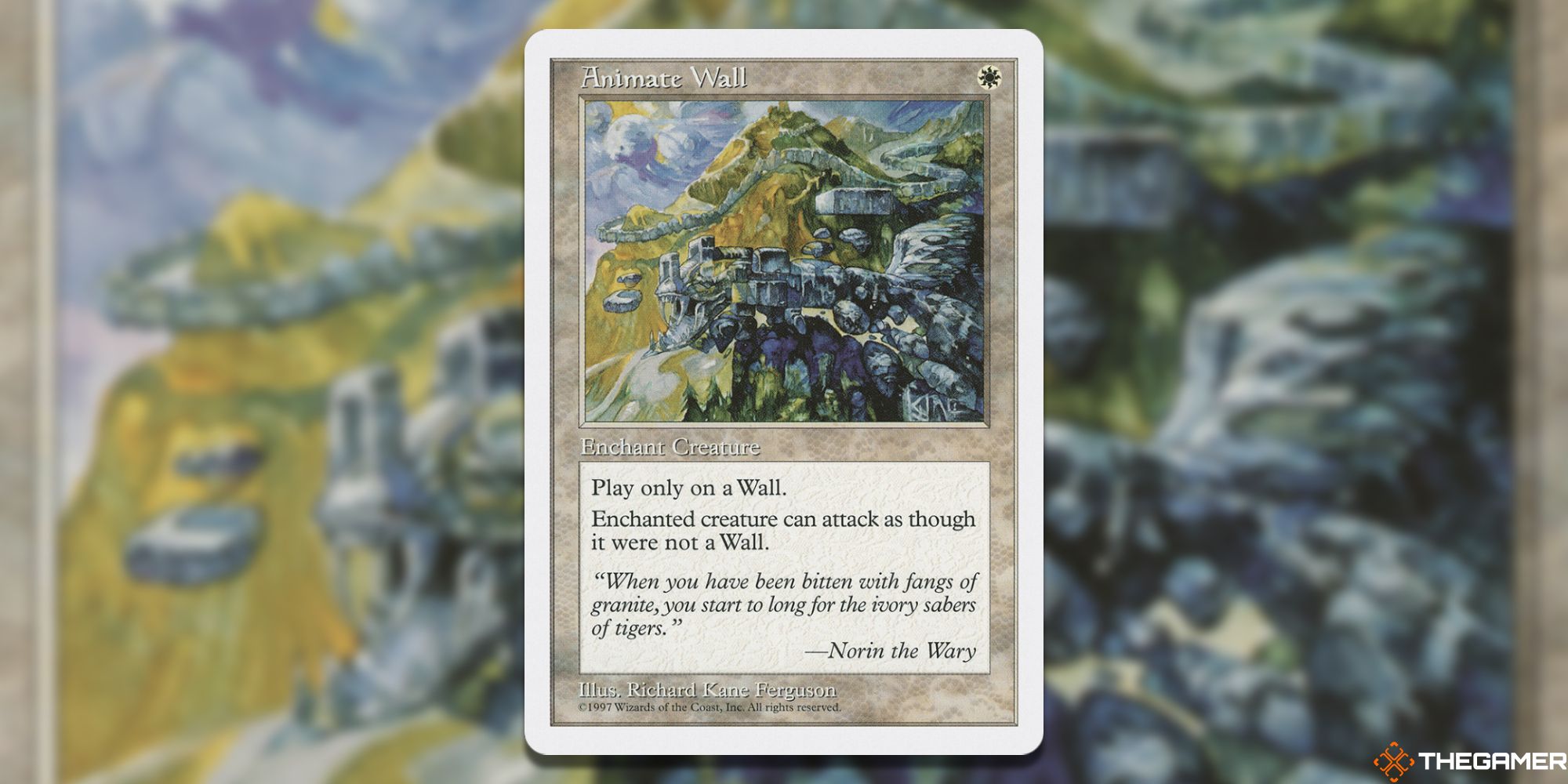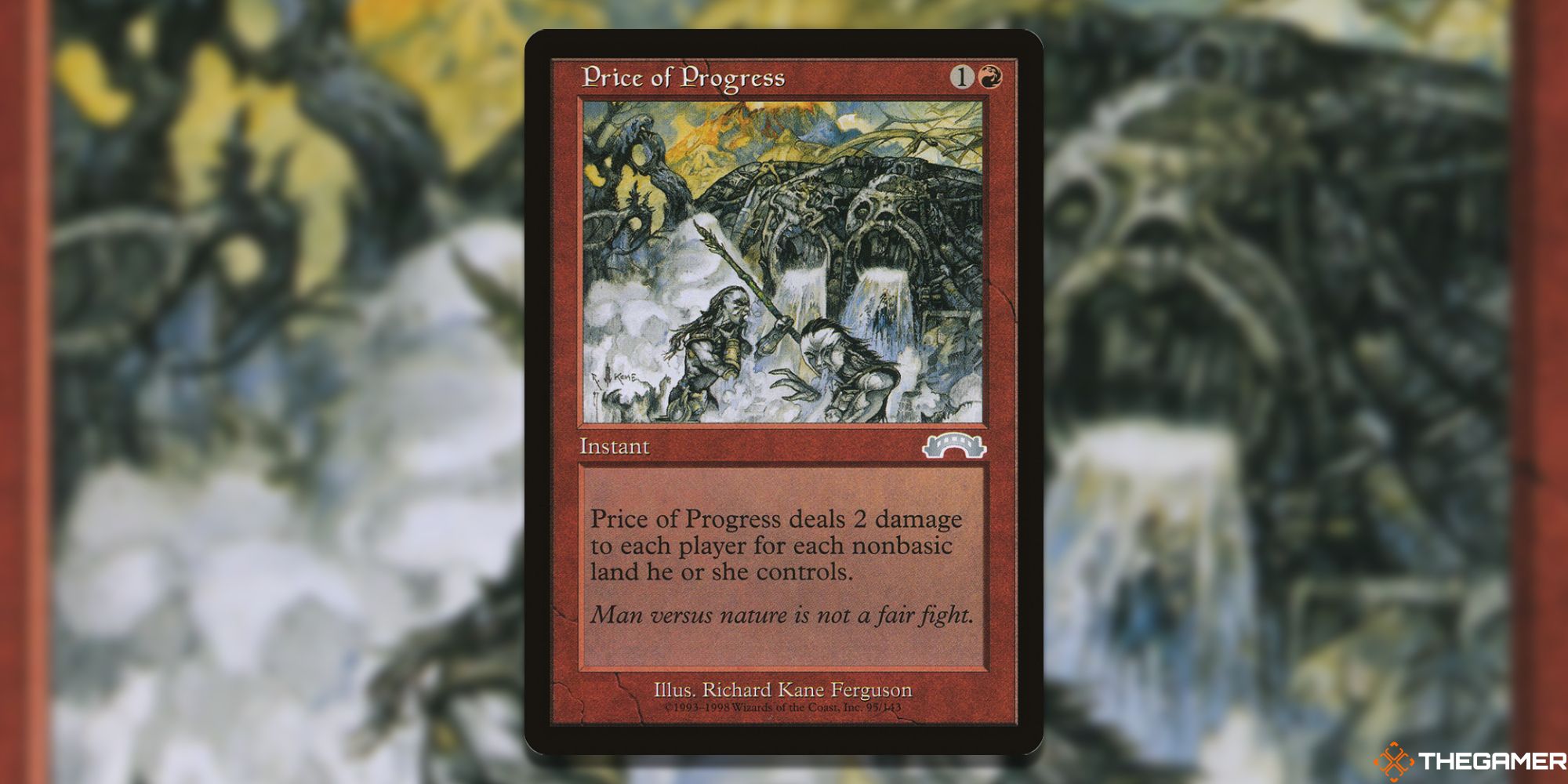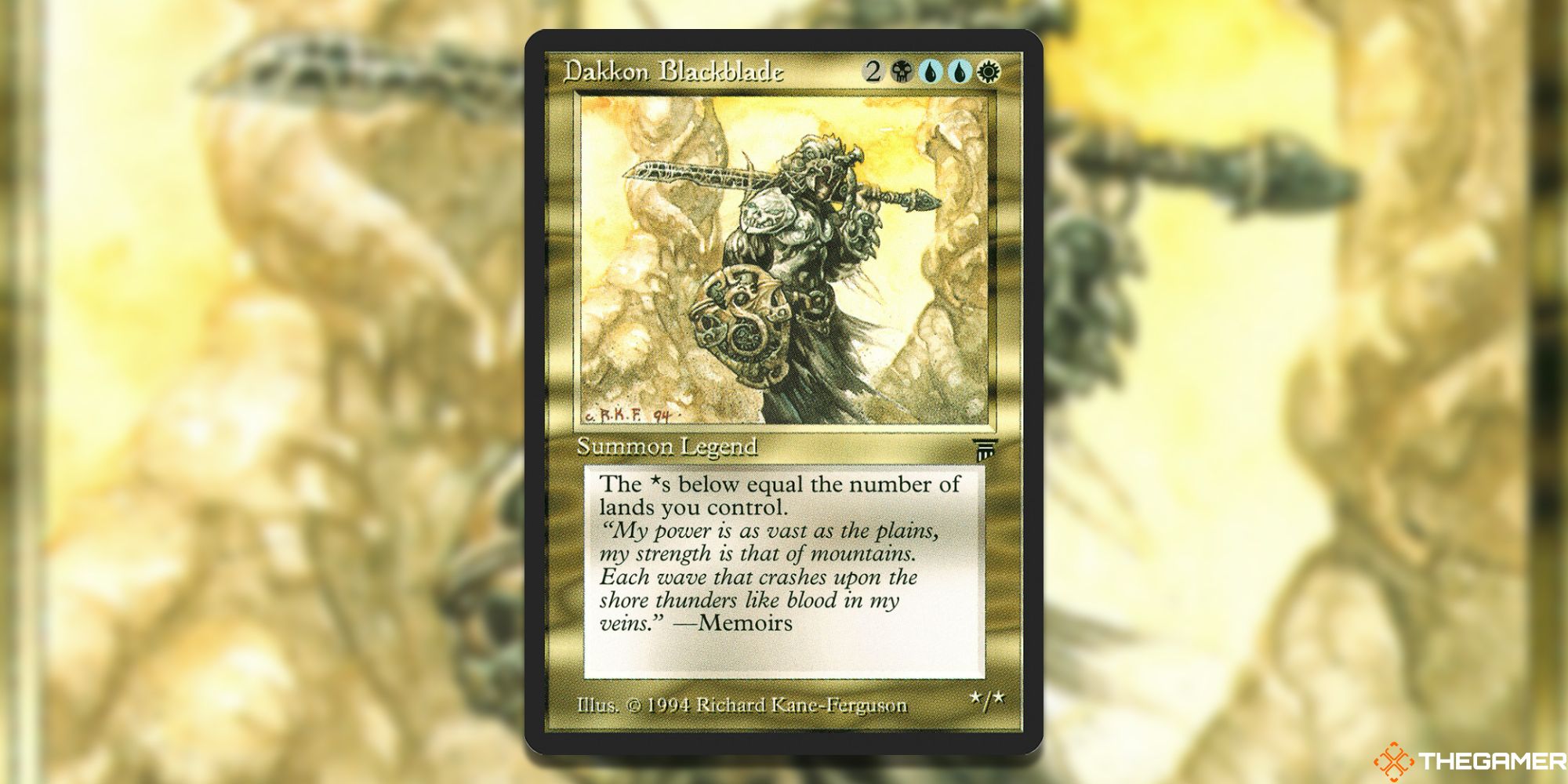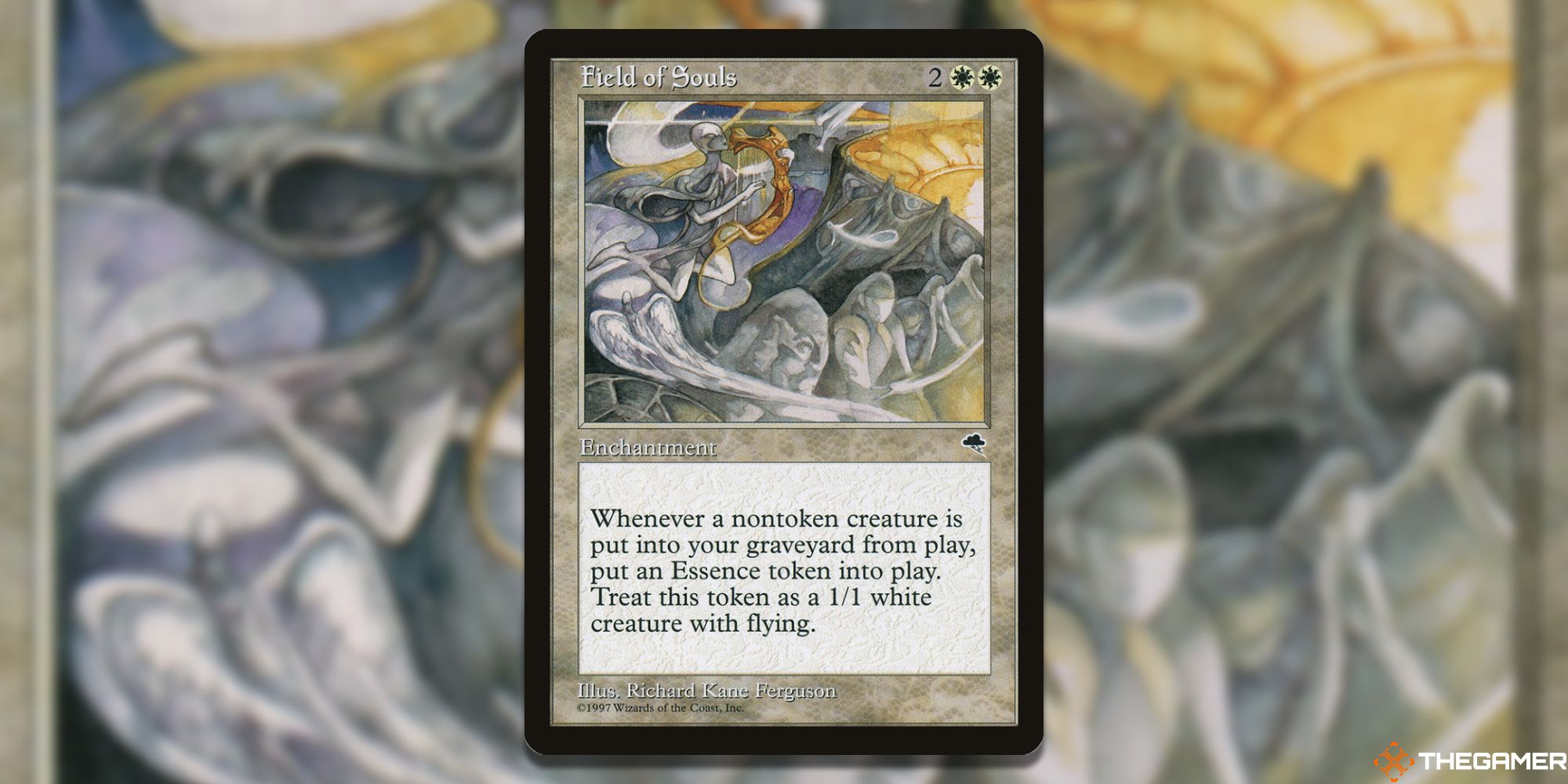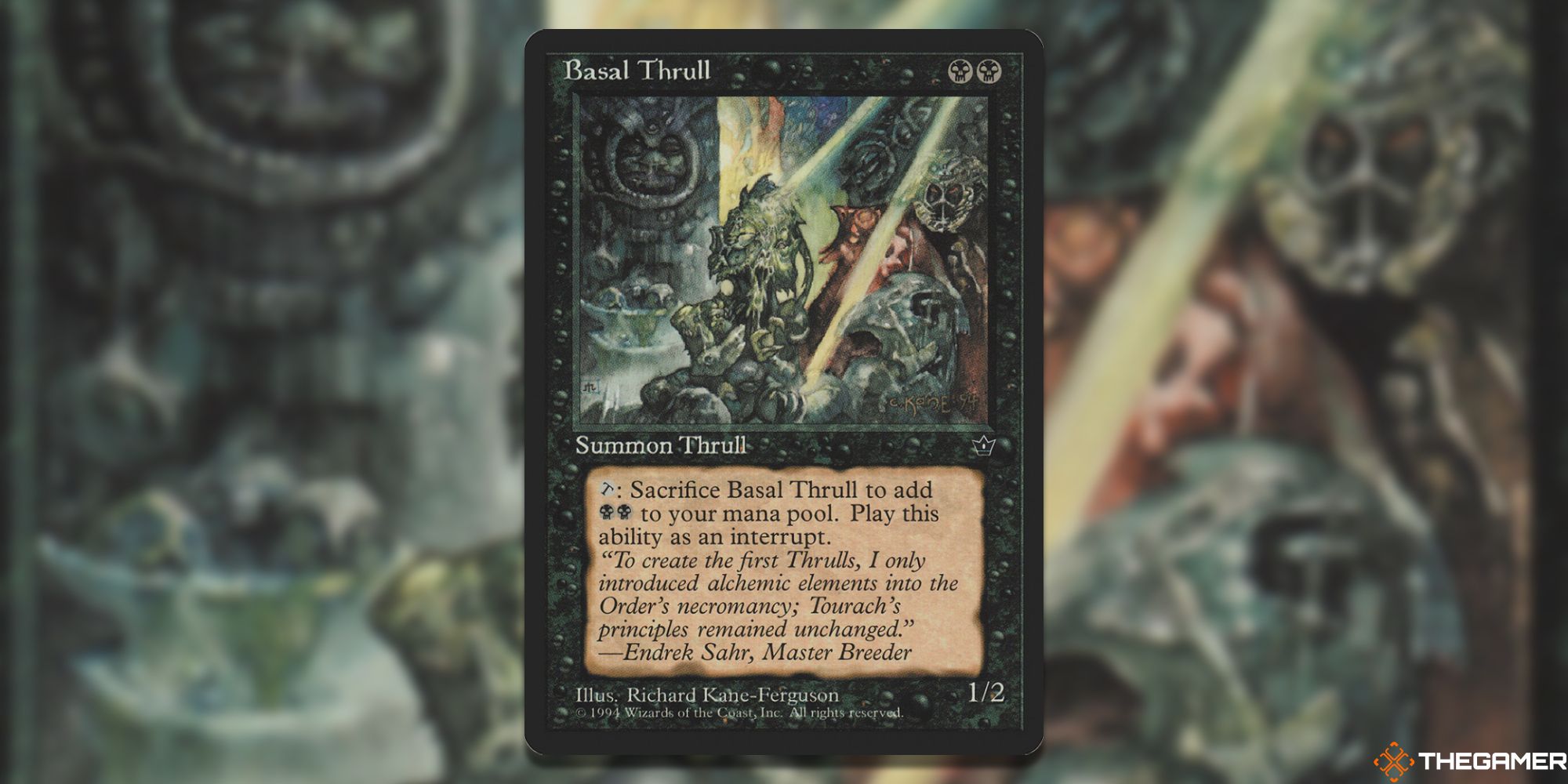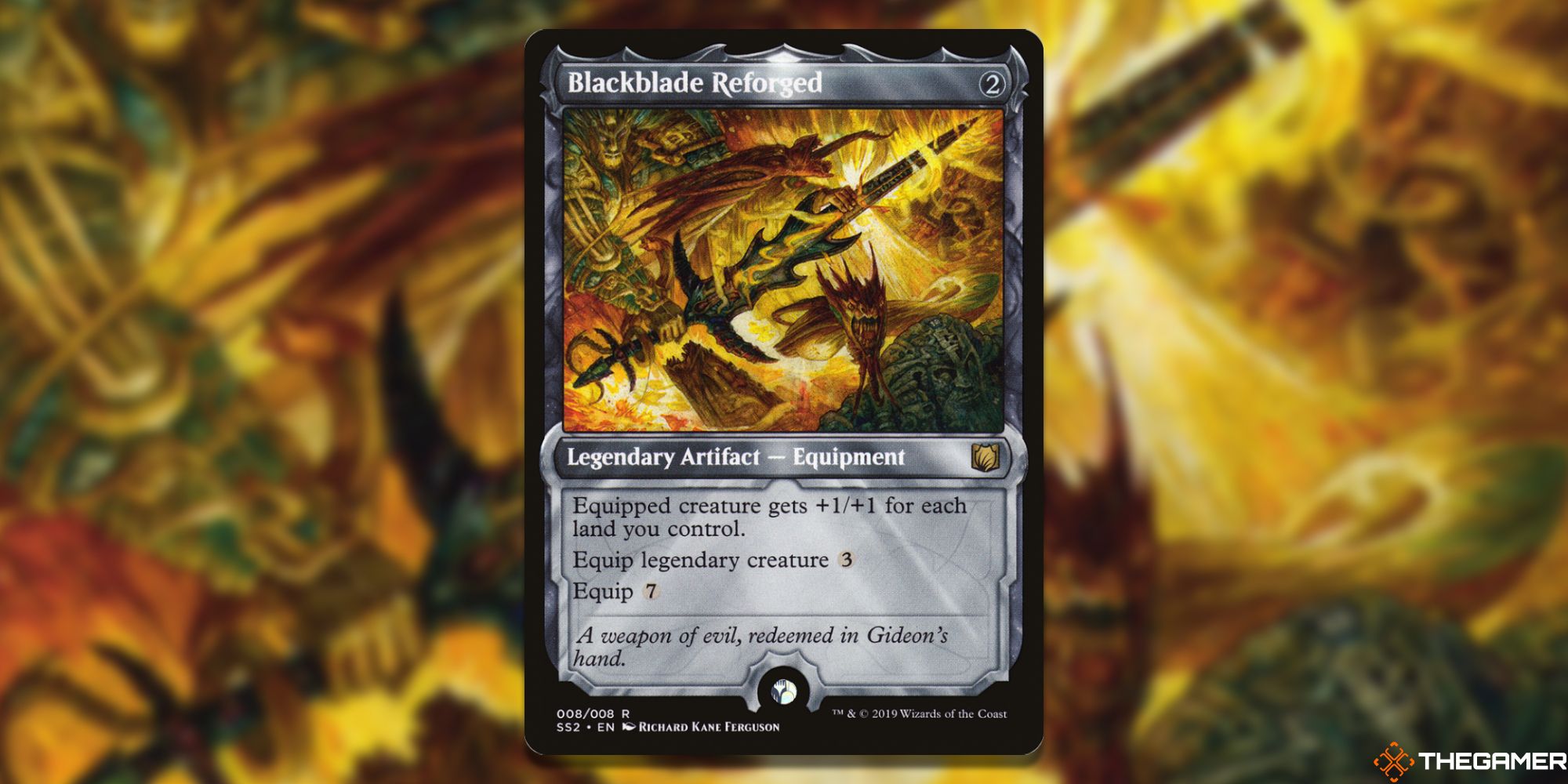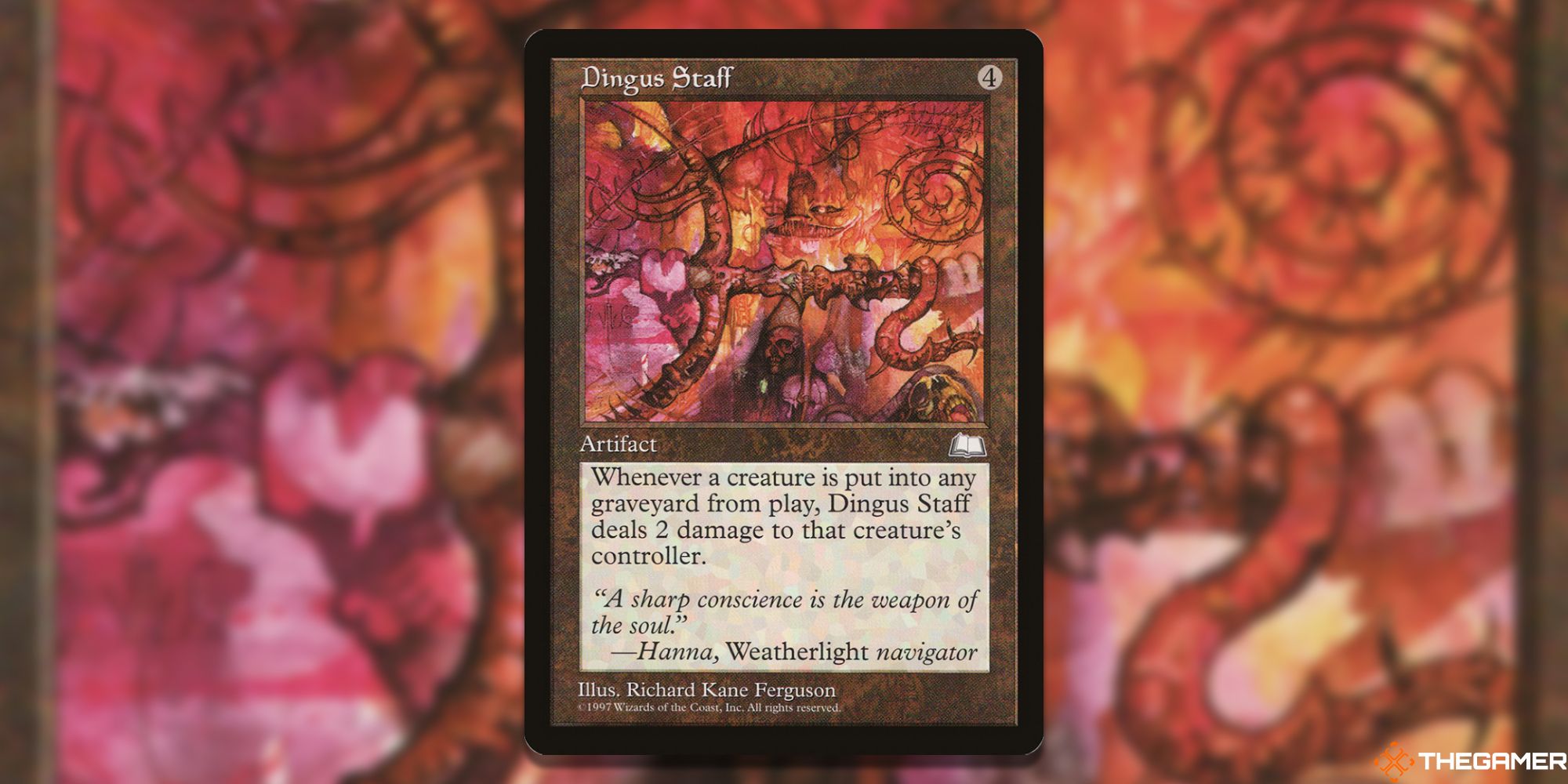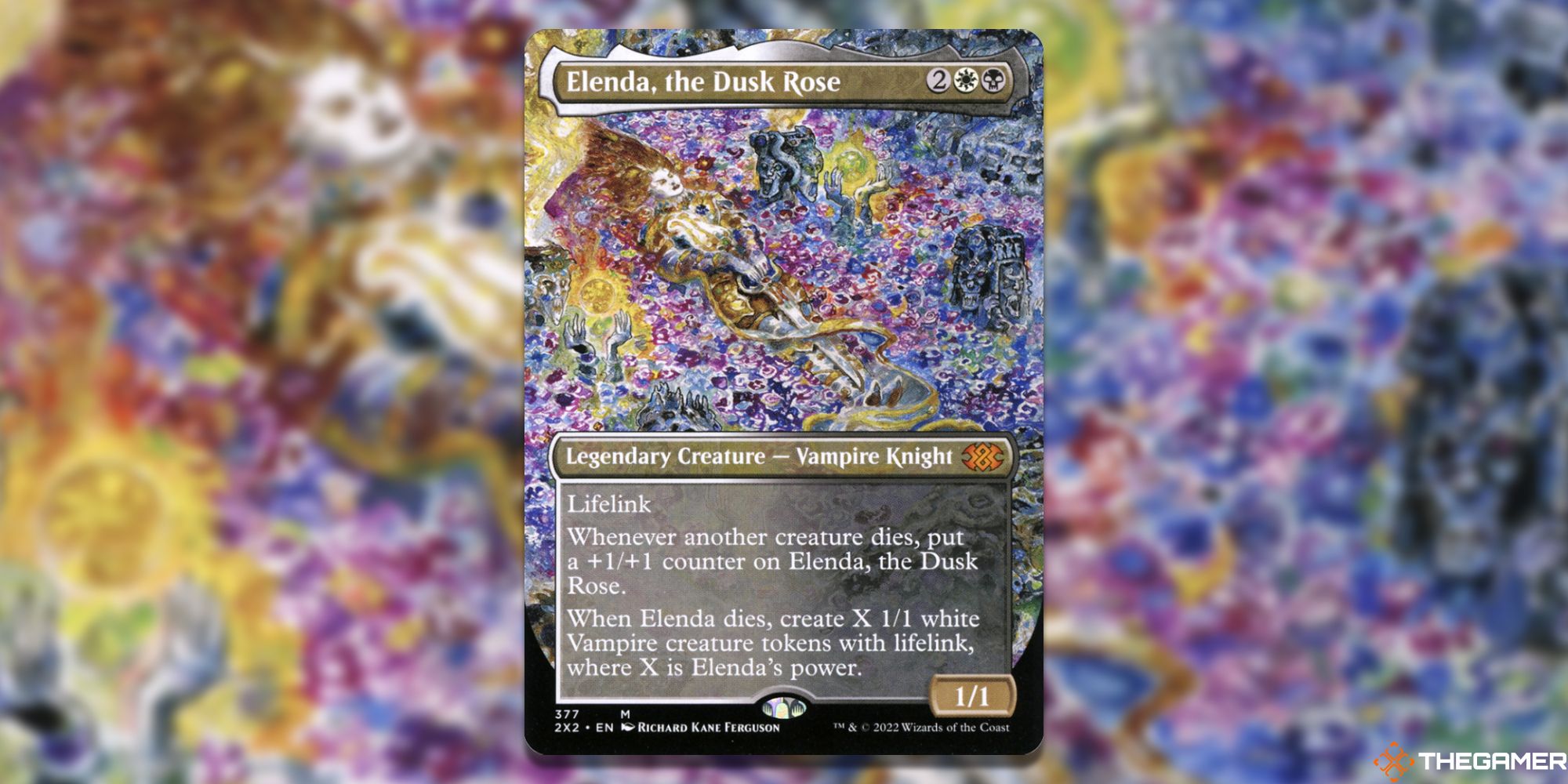Beginning his career in 1994 by illustrating many of the now-iconic legendary creatures from Legends, Magic: The Gathering’s third overall expansion, Richard Kane Ferguson immediately distinguished himself with his unique style. At once soft and hard, with bright colours lending their light to dark, emotional scenes, Ferguson established an instantly-recognisable vibe that continues to resonate to this day.
While most active in the early days of the game, the Magic art renaissance spurred on by the addition of Booster Fun alternate art treatments has led to Ferguson contributing some stunning new pieces in recent years. Today, we’ll be taking a dive into his esteemed portfolio, presenting ten standout pieces from one of Magic’s standout artists.
10 Pyrrhic Revival
Washing up on the Eventide, this piece embodies, quite literally, the darker side of Lorwyn’s fairytale aesthetic. Ferguson presents a landscape built from corpses here, vast mounds of mangled life that seem to include Kithkins and Elementals, but likely cover all of the races of Lorwyn.
Ferguson’s signature technique, wherein he blends highly detailed environments together to create pieces that both strain and reward the eyes, is in full effect here, particularly poignant when the subject matter is a mass grave. The blacks of the mound give way to burnt orange skies further up, casting the scene in light that can be read as both glorious and terrible.
9 Dragonlord Dromoka
A common feature of Ferguson’s art is that it conjures images beyond our comprehension, creating questions in our minds that will likely never be answered. His take on Tarkir’s Dragonlord Dromoka does just this, introducing elements that feel alien, yet simultaneously totally appropriate for one of Magic’s Elder Dragons.
The whip-like tentacles, the colour-soaked cosmos in the background, the terrifying stone faces on the foreground pillars, and most notably the strange, swirling cloud beneath Dromoka’s wings, all conspire to create a Dragon unlike anything seen in Magic before, hinting at powers long-forgotten in a way that makes the ‘Elder’ part of the card feel apt and earned.
8 Animate Wall
A defensive structure becomes an offensive threat in this early Ferguson piece, transforming a beautiful mountain landscape into the stomping ground of a granite-toothed stone snake. It’s a piece with a very natural progression to it, guiding the viewer’s eyes across the canvas in a way that tells a short but effective mini-narrative.
Beginning in the top-left, we follow the wall as it wends its way across the mountain ridge, going up into the top-right, then circling back round to emerge in the foreground, where the full extent of its fearsome appearance is made plain. Here we can see the rocks scattered by the wall still hanging in mid-air, implying a sense of dynamism and power that the creature’s burning yellow eyes sear into us further.
7 Price Of Progress
An eternal format burn staple, Price of Progress would be well-known among fans even if a lesser artist had worked on it. Thankfully for us, however, this is a rare case where a card forms a perfect marriage of aesthetic and mechanical value: a card that impresses just as much through its art as it does on the play table.
It depicts a battle in the never-ending conflict between nature and technology wherein nature has won, the fumes from a flooded factory choking its owners as they writhe in their hubris. The cold greys that dominate the piece convey the destructive effects of technology well, while the bright volcanic peak in the background shows that through all of our mortal mishaps, nature remains, standing tall and proud.
6 Dakkon Blackblade
One of Ferguson’s first-ever pieces for the game, and arguably his most iconic, Dakkon Blackblade is a character who has been referenced many times over the years, with many stepping in to claim his titular sword for their own ends. Said sword certainly stands out in this original rendition, a jagged, war-scarred piece of metal etched deep with countless battlefield stories, but it’s the other elements here that make the piece sing.
Dakkon’s whole ensemble is incredibly detailed, from his skull epaulettes to his coiling dragon shield, and it contrasts beautifully with the soft yellow background through its darker tones. The final flourish is Dakkon’s face, conveying paragraphs of character in a simple head tilt and manic grin. It’s no wonder fans latched onto him with such an outstanding piece as his first depiction.
5 Field Of Souls
A sojourn into the realm of the abstract, Field of Souls takes Ferguson’s trademark style and runs off with it into the hills of fancy. It’s not entirely clear what’s being shown here: perhaps a vision of an afterlife, or perhaps the transition from life to death itself? It all comes down to the viewer’s interpretation, a hallmark of enduring art in any medium.
From the harp-playing Angel in the top-left, our eyes follow the procession of recently-departed souls across the canvas, watching in real time as they curve into the side of a mysterious structure that may well represent a crypt full of empty graves. The whole piece is a beautiful riddle for the viewer to solve.
4 Basal Thrull
One of the creature types from the early days of Magic that has fallen out of use in recent years, Thrulls have an interesting history in terms of how their appearance and function have changed over time. Basal Thrull is an early example, showing the creation of an original recipe Thrull back in the dark days of Fallen Empires.
There are loads of nice details here, from the pained expression on the Thrull itself, to the eerie overseer lurking in the background, to the huge stone gate lying ajar, revealing a well-lit tunnel beyond. It all comes together to create a depiction of dark magic that feels as twisted and forbidden as it should, in sharp contrast to the often-sanitised versions we see today.
3 Blackblade Reforged
The return of this legendary weapon in Dominaria was a big deal for long-time Magic fans, so much so that Ferguson, the artist behind its original incarnation, was called upon to create a special version of the card for its appearance in Signature Spellbook: Gideon. The result is a piece that pulls the viewer right back to 1994, while still feeling as fresh as art from 2019 should.
As with much of Ferguson’s art, there’s a lot going on here. An armoured character does the titular Reforging above a Demon-infested lava pit, a statue of what may well be one of their blacksmith ancestors visible in the foreground. It feels dangerous and alive, worthy of such a powerful weapon, and yet it’s also steeped in an appropriate level of weighty history as well. Few nostalgic throwbacks cut as deep as this iconic blade.
2 Dingus Staff
There’s little that can prepare you for the tonal whiplash you’ll experience from seeing the artwork on this card after reading its name. In what world does ‘Dingus Staff’ bring to mind a searing vision of literal Hell, complete with screaming skulls and cruel, twisting thorns? A world in which Richard Kane Ferguson creates Magic art, apparently.
That sounds hyperbolic, but the more you look at this card, the closer the art seems to come to portraying pure evil. The grinning Devil, face wreathed in flames, offers the viewer the titular Staff, a twisted creation with a snake wrapped around the handle in a dash of religious imagery. It’s terrifying to look at, a work of horror in the best possible way.
1 Elenda, The Dusk Rose
A pleasingly literal adaptation of this legendary Vampire from Ixalan, Ferguson creates a unique atmosphere by showing Elenda sleeping atop a blanket of colourful flowers: an unconventional pose for a Knight in Magic, to say the least. It makes perfect sense for the character, though, evoking the long slumbers of Vampires and the funereal traditions of Knights in one fell swoop.
Beyond the flowers, Elenda is also surrounded by Ferguson’s signature stone faces, and stone hands bearing glowing orbs. These objects create new mysteries that will never be solved, adding depth and beauty to a character previously known for neither.


